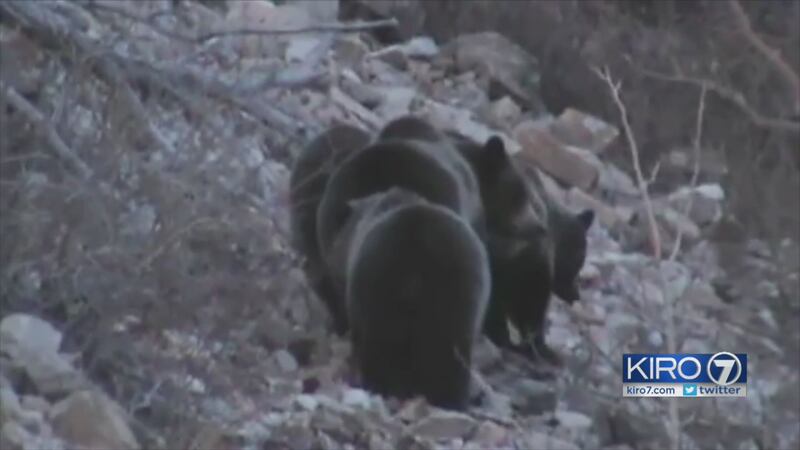Grizzly bears once roamed the rugged landscape of the North Cascades in Washington state, but few have been sighted in recent decades.
Federal officials looking to restore the grizzly bear population released a draft plan last year with four options, ranging from taking no action to varying efforts to capture grizzly bears from other locations and transplant them to 9,800 square miles of mostly public land in and around North Cascades National Park.
The National Park Service and U.S. Fish & Wildlife Service worked on drafting the environmental impact statement (EIS) for several years. After being published for public opinion, it was met with mixed reaction.
Secretary of the Interior Ryan Zinke spoke on Friday in Sedro-Wooley, declaring his support for the restoration.
"I’ve dealt with the grizzly bear all my life," he said. "I’m in support of the great bear ... I’m also in support of doing it right."
Sunday, Max Moncaster with the National Cattlemen's Beef Association Center for Public Policy sent the following statement from Ethan Lane, PLC and NCBA Federal Lands Executive Director:
"We are extremely disappointed with the Department of the Interior's stated support for introducing Grizzly Bears to the North Cascades of Washington. For more than a year we have heard the Secretary talk about being a better neighbor, but unfortunately actions speak louder than words. Reintroducing as many as 200 man-eating predators into an area already reeling from exploding gray wolf populations is anything but neighborly. This decision won't just impact ranchers - it's a blow for the entire North Cascades ecosystem, the safety of locals and visitors, and the local economy, too. In fact, the only beneficiaries of an action like this will be the radical environmental activists that support this type of ill-advised ecosystem tinkering."
Recently his department halted the EIS. It's unclear why. Zinke did tell reporters that he expects a decision on the EIS by the end of the year.
How the EIS would restore grizzlies in the cascades
Three of the proposed alternatives seek to restore a population of about 200 grizzly bears by relocating animals and letting them breed. The options differ in the number of bruins initially released and the time expected to get to that goal, ranging from 25 years for the expedited option to 60 to 100 years for the other two alternatives.
%
%
Federal officials note that grizzly bears tend to avoid areas of human activity, and the animals would be relocated in remote areas, away from grazing allotments. They'll also be radio-collared and monitored.
Supporters say the shy, massive creatures - a symbol of true wilderness - should be brought back. They say the population won't recover without help, and their return would increase the biodiversity of the ecosystem.
Others say the animals should recover naturally, while some worry about potential increased dangers to recreationists and livestock and opposed the move over potential impacts to communities, ranchers, farmers and others.
About grizzlies in North America
An estimated 50,000 grizzly bears once roamed much of North America. Most were killed off by hunters in the 19th and early 20th centuries, and they now occupy only about 2 percent of their original range across the Lower 48 states.
They were listed as threatened under the Endangered Species Act in 1975. In the North Cascades, the population is estimated to be fewer than 20 animals, according to Fish and Wildlife Service officials.
The most recent confirmed sighting of a grizzly bear was in 1996 in the U.S. portion of the North Cascades ecosystem. A bear was confirmed in British Columbia within 20 miles of the U.S. within the last five years.
%
%
The bears are at risk of local extinction, and recovering them would enhance the population's survival, restore the animal as part of the area's cultural heritage and provide people the chance to experience the animals in their native habitat, federal officials say.
Without intervention, the animals could disappear; individual grizzly bears are increasingly isolated and have limited opportunity to breed, officials with the agencies said.
The Associated Press Contributed to this report
More news from KIRO 7
- Thunderstorms rolling into Puget Sound region Friday
- Jury rules officer used excessive force in mall incident
- Sketch released of man who groped student
- School district cuts one day off school week; students will only go for four days a week
- Great Pacific Garbage Patch 16 times larger than estimates: 87,000 tons of plastic and growing
Cox Media Group








